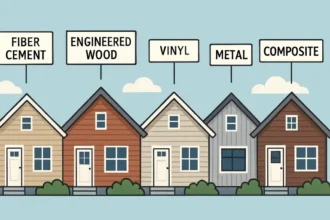What Is Land Clearing and Why Is It Important?

Land clearing systematically removes trees, brush, and other vegetation from a designated area. This process not only makes the land suitable for subsequent use in farming, building, landscaping, or other purposes, but it also significantly enhances the value and accessibility of the property. Without this foundational first step, it would be nearly impossible to lay the groundwork for new projects or maximize the usability of undeveloped land. Midwest land clearing experts bring extensive expertise, specialized equipment, and a nuanced understanding of local terrain and regulatory frameworks to ensure land clearing operations are executed efficiently and with environmental responsibility in mind. By leveraging their experience and high-powered machinery, they can manage complex clearing projects to minimize disruption to the land and ensure that essential safety and environmental standards are upheld at every step. This thoughtful approach satisfies legal requirements and promotes sustainable land management for the future.
The importance of land clearing extends far beyond just tidying an overgrown site; it is a pivotal step in unlocking the property’s full potential. The process creates countless opportunities for productive land use and responsible development when performed with care and expertise. For example, careful clearing can help improve soil health by allowing sunlight to reach the ground, enhancing nutrient cycling, and enabling crops or turf to take root and thrive. Additionally, removing excess brush and deadwood dramatically decreases the fire risk in regions prone to wildfires, providing added security to homes, farms, and communities nearby. Furthermore, land clearing is often paired with grading and drainage improvements to maintain stable natural water flow, helping prevent erosion, flooding, or unwanted runoff issues. In the Midwest, where land is in high demand for agriculture and development, expert land clearing services play a vital role in reconciling the needs of growing populations with responsible environmental stewardship, ensuring that current and future generations have access to productive land and healthy ecosystems.
Table of Contents
Understanding Land Clearing
At its core, land clearing refers to removing vegetation and debris—ranging from grasses and shrubs to mature trees and stumps—from a plot of land to reveal a clear, level surface for intended future use. This procedure forms the foundation for many projects, whether it involves a homeowner clearing a lot for a backyard garden, a municipality preparing public land for recreational use, or a developer getting dozens of acres ready for large-scale commercial construction. Each project’s size, scope, and specific goals can differ dramatically. However, regardless of the circumstances, success depends on thoughtful planning, selecting the appropriate methods, and maintaining a systematic approach to ensure efficiency and careful stewardship of environmental resources.
Effective land clearing involves more than simply removing what is visible above the ground. It also often includes digging out stubborn roots, grinding large stumps, hauling heavy woody debris, and even remediating compacted or degraded soils. The choice of equipment and techniques is influenced heavily by terrain (whether flat, rolling, or steeply sloped), the density and type of vegetation, intended land use, and budget constraints. For example, significant developments on densely wooded tracts might require mechanical mulchers or excavators. At the same time, sensitive areas such as wetlands might benefit from selective manual clearing to preserve key ecosystem elements. By collaborating with specialized teams, landowners can avoid costly mistakes, streamline the clearing process, and minimize damage to local wildlife and plant habitats.

Standard Methods of Land Clearing
The technique chosen for land clearing significantly affects not only the project’s overall cost and timeline, but also its ecological footprint and the long-term results of the effort. The four most widely used methods are tailored to serve specific needs and conditions:
Manual Clearing
Manual clearing is generally reserved for smaller projects, sensitive areas, or places complex to access with large equipment, such as steep hillsides or dense forests with narrow entry points. Workers employ hand tools such as machetes, axes, and pruners to cut away brush and smaller trees. While this method is more labor-intensive and time-consuming, it’s the least disruptive to the environment, making it the preferred option when it’s crucial to maintain fragile soil layers, protect rare plant and animal species, or comply with strict environmental protections. In ecological restoration projects, manual clearing is often invaluable for targeting invasive species while leaving native vegetation intact.
Mechanical Clearing
Mechanical land clearing utilizes heavy machinery like bulldozers, excavators, forestry mulchers, and brush cutters to rapidly and efficiently clear large tracts of land. This approach is especially suitable for sizable development projects, large-scale agricultural ventures, or preparations for infrastructure installations. The strength and speed of mechanical clearing allow for swift removal of trees, undergrowth, and stumps so that land can be readied for grading or construction in a fraction of the time required by manual efforts. However, using large machinery may disturb the soil, potentially leading to compaction or increased susceptibility to erosion, especially if post-clearing restoration steps are not implemented.
Chemical Clearing
Chemical methods focus on the targeted application of herbicides to kill specific plants or troublesome invasive species, making subsequent manual or mechanical removal easier. This technique is highly effective for managing problematic regrowth, such as stubborn weeds or brush, but must be cautiously employed. Strict adherence to regulations is necessary to avoid inadvertently harming desirable native plants, contaminating water resources, or disrupting wildlife. When executed thoughtfully, chemical clearing can be valuable in an integrated land management plan, especially in overgrown or previously cultivated areas where other methods have fallen short.
Controlled Burning
Controlled burning, also called prescribed fire, is a traditional land management method used to clear brush, manage invasive plant species, and recycle nutrients into the soil. This approach is efficient in prairie and woodland environments where periodic fire is a natural part of maintaining ecosystem health. Conducting a controlled burn under professional supervision can rejuvenate landscapes, stimulate the regrowth of native plant species, and help manage fuel accumulations that could otherwise lead to catastrophic wildfires. However, controlled burns are subject to strict regulations and require planning to manage fire risks, minimize impacts to nearby communities, and ensure that only the intended area is affected.
Environmental Considerations
Although land clearing creates opportunities for development or agriculture, it introduces certain risks that must be managed with care to protect both community well-being and environmental health:
- Soil Erosion: Removing plant cover exposes soil to the elements, making it vulnerable to being washed away by rain or blown away by wind. This can degrade a site’s productivity and lead to sediment pollution in nearby rivers, impacting aquatic life and water quality.
- Habitat Loss: Clearing forests, grasslands, or wetlands can disrupt crucial wildlife habitats, resulting in the loss of nesting areas, migration routes, and food sources for local animals. Well-planned projects aim to retain natural buffers, leave wildlife corridors, or replant cleared areas to support ecosystem balance.
- Water Quality: Bare soils left after clearing are prone to runoff, which often carries sediments, nutrients, and chemicals into local waterways. This can harm fish, aquatic plants, and degrade drinking water supplies for nearby communities.
- Carbon Emissions: Trees and dense brush act as carbon sinks, capturing greenhouse gases. Large-scale clearing can contribute to climate change unless offset by replanting or conservation efforts that restore carbon-absorbing vegetation.
Best Practices for Responsible Land Clearing
- Planning and Permitting: Conduct a thorough site analysis, considering soil conditions, topography, and existing plant communities. Obtain relevant permits early to ensure legal compliance and minimize the risk of setbacks during or after the project.
- Selective Clearing: Focus clearing efforts only where it’s essential for the intended purpose, preserving as much native vegetation as possible. This benefits wildlife and reduces the risk of erosion.
- Minimize Soil Disturbance: Use low-impact tools or clearing techniques, especially in sensitive areas. Chip or mulch cleared material onsite to retain nutrients and help control bare ground.
- Erosion Control: Install appropriate barriers, such as silt fences, straw wattles, or groundcovers, immediately after clearing. These steps reduce the risk of sediment entering waterways and maintain soil in place for subsequent planting or construction.
- Wildlife Protection: Avoid work during peak breeding seasons for local fauna. Designate undisturbed areas or corridors to allow wildlife safe passage through or around cleared sites.
- Revegetation and Restoration: Implement a site-specific replanting plan using native species to restore ecosystem function, stabilize soils, and ensure long-term project success.
Conclusion
Land clearing is an essential first step for diverse land uses, including agriculture, homebuilding, commercial construction, and recreational development. Its actual value is realized when it’s carried out with an eye toward sustainability, protecting soil health, conserving water resources, and supporting thriving habitats for wildlife. By engaging knowledgeable professionals, landowners can be confident that their projects will be handled efficiently, under environmental and legal standards, and with respect for immediate needs and long-term stewardship.
Ultimately, responsible land clearing opens up possibilities for today’s communities and businesses and helps ensure that natural landscapes continue to provide essential ecological services for future generations. Through careful project planning, adherence to environmental best practices, and ongoing care, landowners and professionals together can lay the groundwork for a productive yet sustainable landscape.






